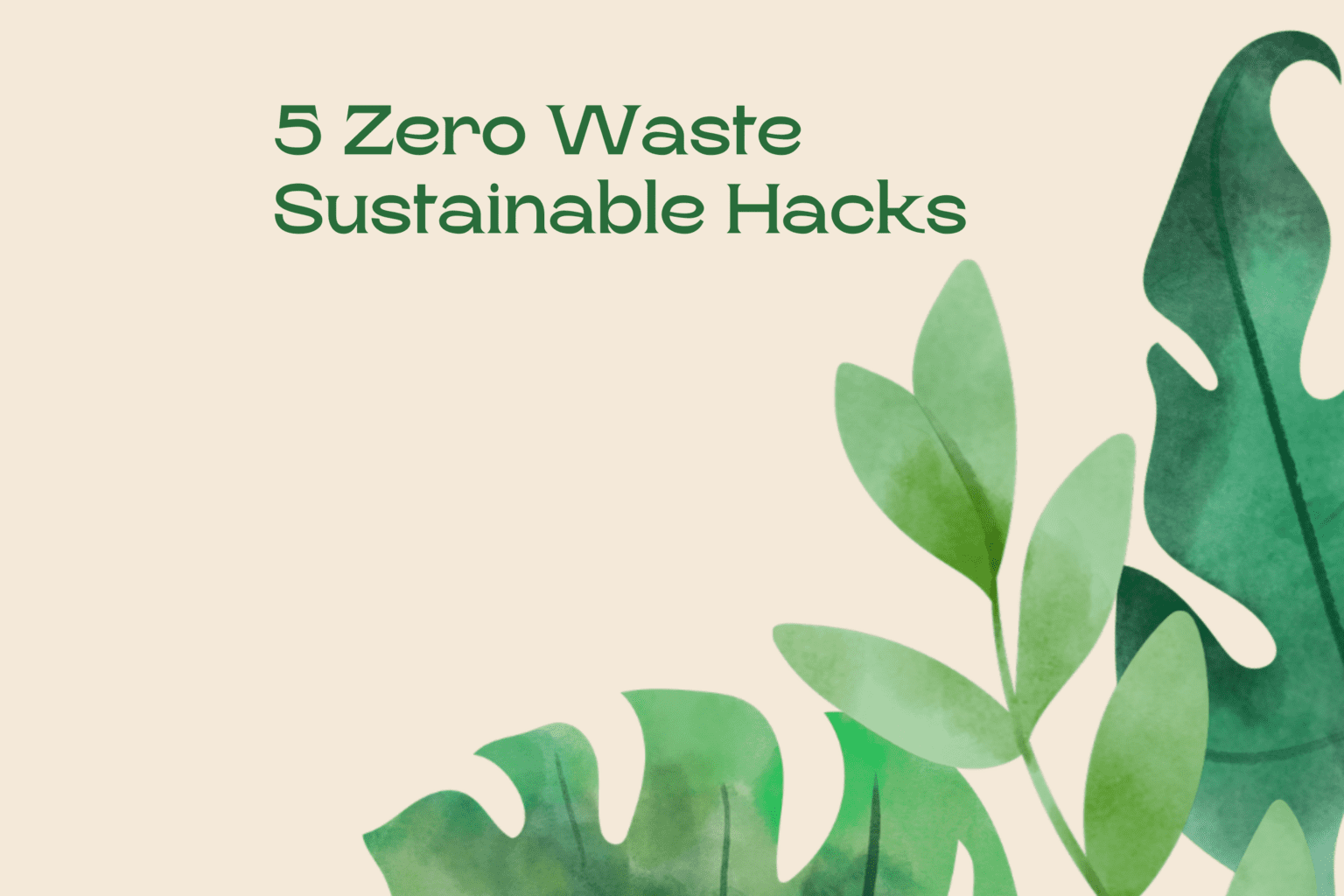In our home, our kitchen and garden come to a full circle. I want to share some of my zero waste sustainable kitchen to garden hacks which I practice everyday. These are also easy to implement and will become part of your routine soon enough.
Zero Waste and sustainability is the buzz word for the present generation. For people of my generation, it was all but natural for us to be mindful of the waste we generate and to live sustainably within our means. Of late the word sustainable has been abused and no one really knows the true meaning and consequences this word is associated with. It is truly conspiratorial, if one would research the organizations behind this movement. So let us leave it at mindful less waste living shall we.
In this post, I will be sharing some of my favorite zero waste sustainable hacks which comes a full circle in my daily life.
1. USED BLACK TEA LEAVES FOR ROSES
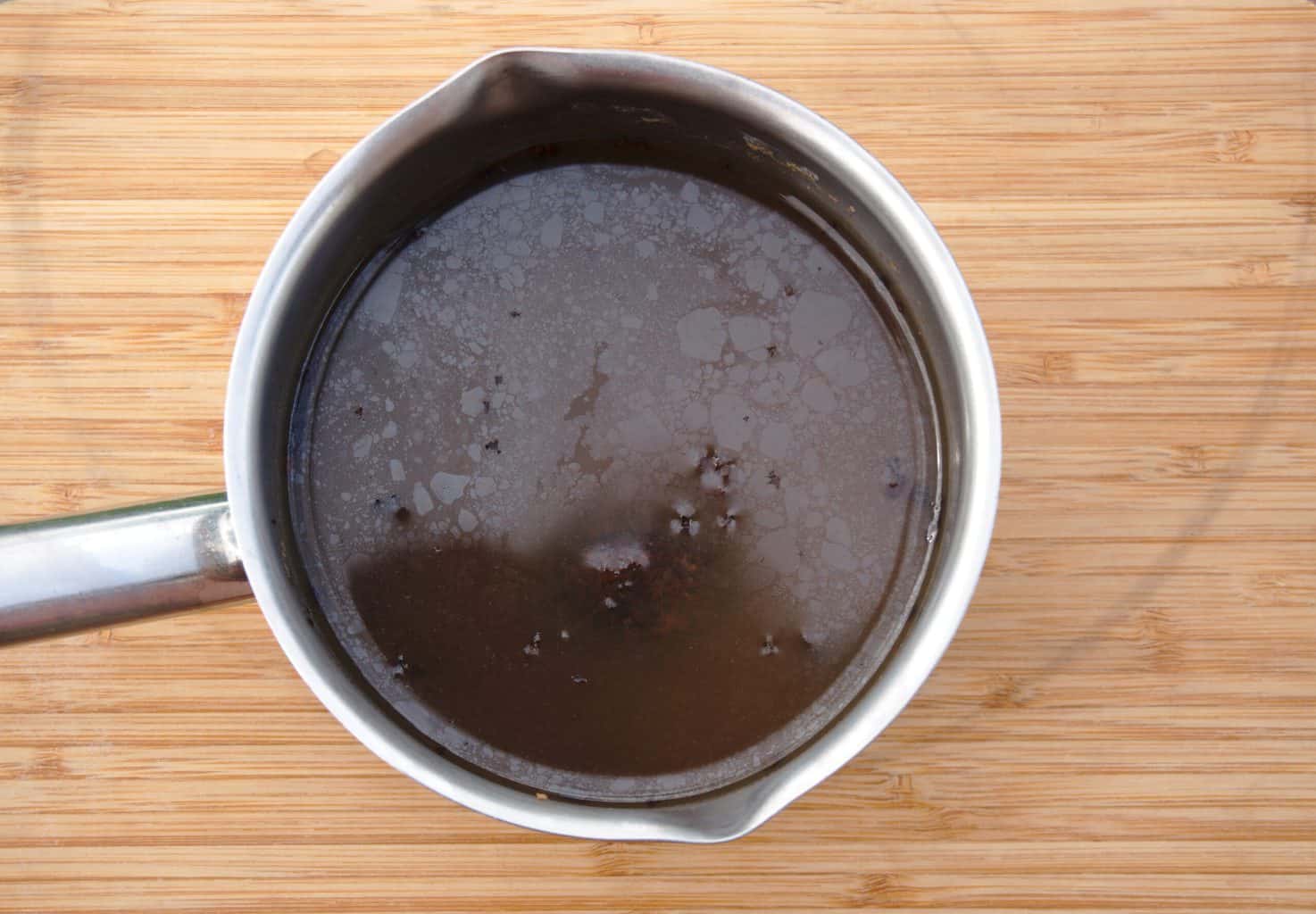
I love to drink black tea with my breakfast. This habit stayed with me since childhood. I remembered my aunt pouring out the used tea leaves by adding a little water to the rose bushes. So, instead of composting it, I seep the used tea leaves with water another half an hour and then pour to the rose bushes. Since I started doing this, my rose plants are very happy and have tripled their bloom. I have so many roses that I make jams and cosmetics out of it.
2. DON’T WASTE WALNUT SHELLS
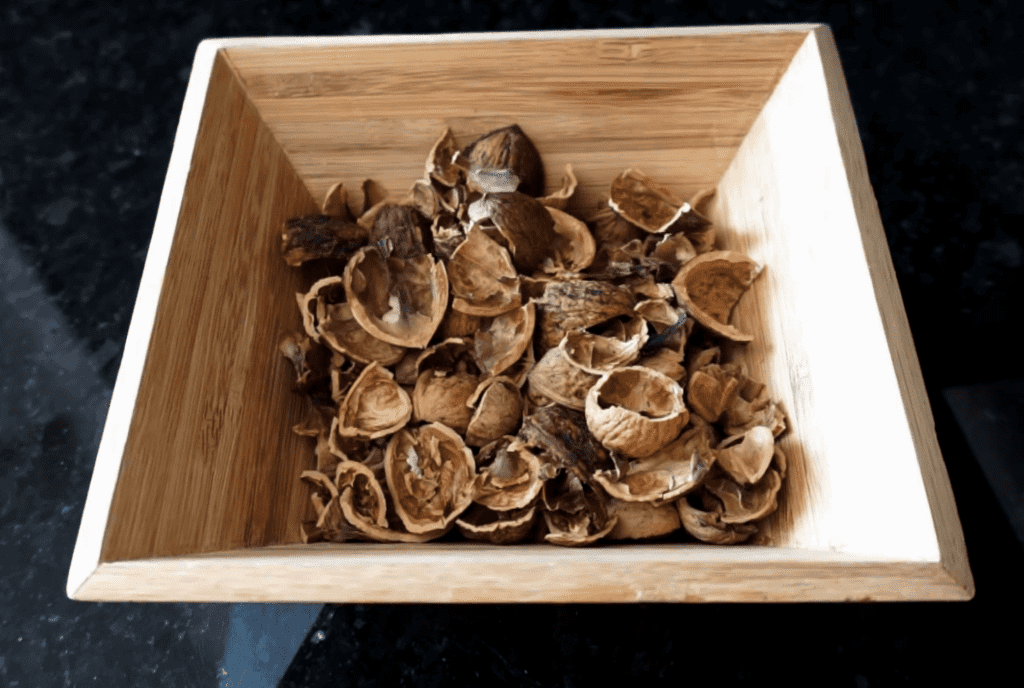
Do not waste walnut shells, you can use it for pets as walnut shell pet litters. Finely ground cosmetic grade walnut shells are used as exfoliates. Since, we like to grill during the summer months. These walnut shells come handy to add to the fire and then I can use the ashes for the garden. They are excellent fertilizers. Walnut shells take a long time to compost. So by burning them you can compost them easily too.
3. ZERO WASTE CHARCOAL ASH HACK- COLLECT IT, IT HAS MANY USES
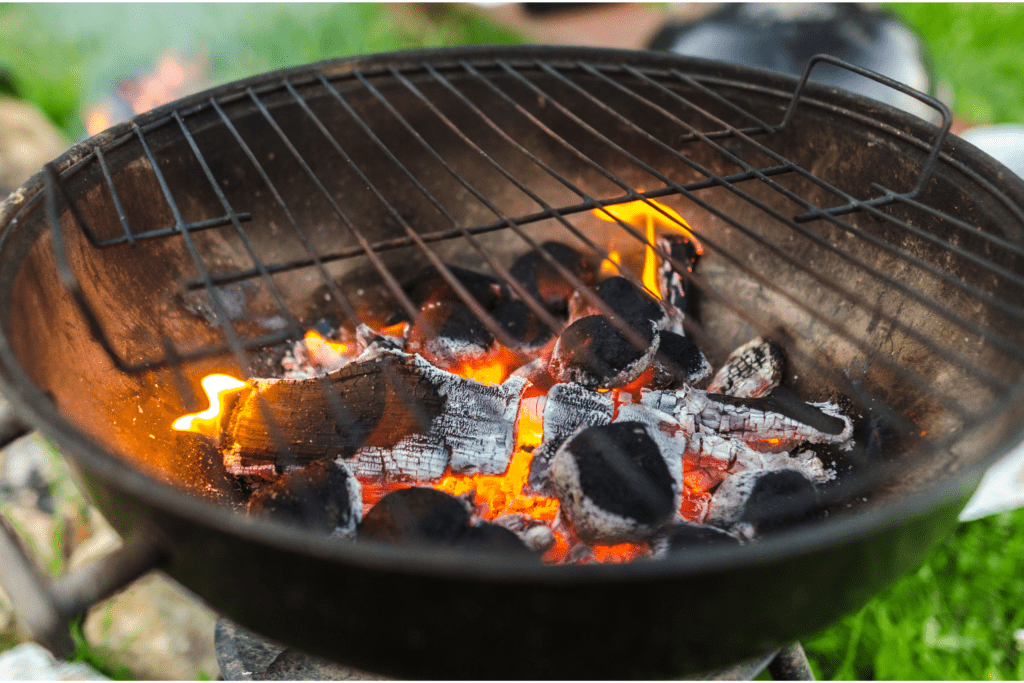
USE ASH AS PLANT FOOD
Ashes have many uses. Wood ashes have a high alkaline content and trace amounts of calcium and potassium, which encourage blooms. This alkaline property is beneficial if your soil tends to be acidic. Spread the ashes in spring around alkaline-loving plants such as clematis, hydrangea, lilac, and roses.
Not all plants will like it though, therefore, avoid ashes on acid loving plants like rhododendrons, blueberries and azaleas. Use the ashes sparingly to your compost, because this could be counter productive. Ashes in the compost can counteract the benefits of manure and other high-nitrogen materials.
ASHES FOR CLEANING
You can clean fire place glass doors. Mix some ash with a bit of water, and apply them with a damp cloth, sponge, or paper towel, or simply dip a wet sponge into the ashes. Rub the mixture over the doors’ surfaces. Rinse with a wet paper towel or sponge, then dry with a clean cloth. You will be surprised how clean your fire place glass will turn out.
Wood ash was a key ingredient in old fashioned lye soap. I have seen soaps made out of ash in India. When we go camping, I use ash for cleaning my camping cookware.
Many cultures still use ash for clean their cookware too, but beware you can easily scratch delicate pots and pans. Ash polishes pewter well.
4. COMPOST KITCHEN SCRAPS
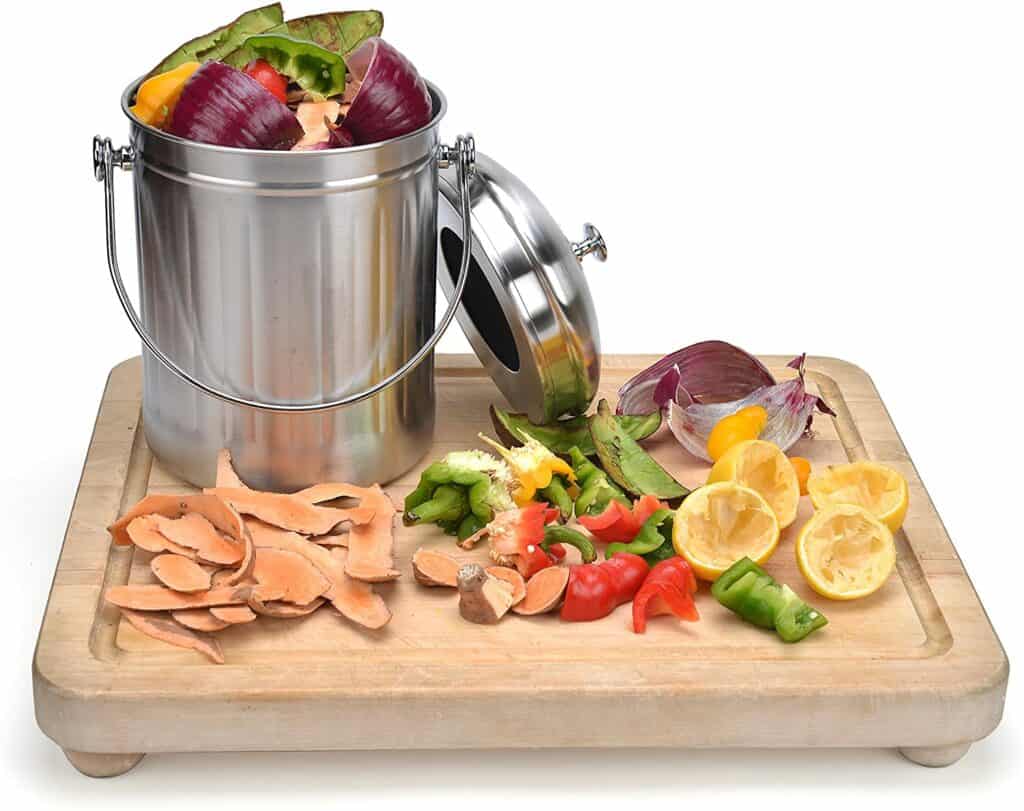
We are big into composting all our kitchen and garden scraps. In our garden we have 3 huge compost bins which we keep rotating and feed the finished compost to our garden.
Once the compost is ready we spread them on all our beds. The compost is also great for preparing mulch beds. All households in Switzerland compost their kitchen waste privately or communally. ( Photo courtesy – Amazon.com )
5. COLLECT BANANA PEELS AND WASHED RICE WATER
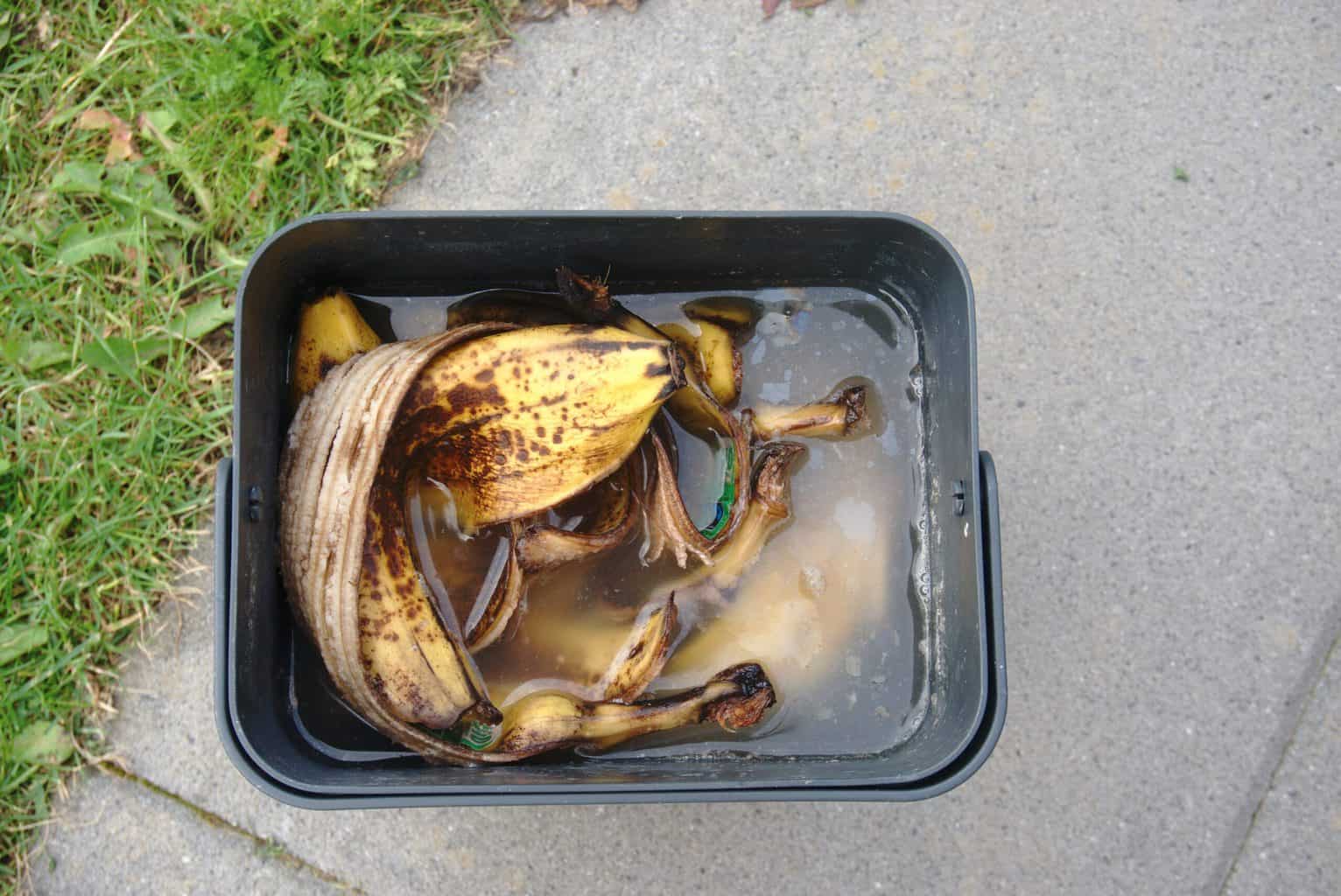
Bananas are rich in essential nutrients such as potassium, and antioxidants such as vitamin C. Therefore, instead of throwing it away, collect only the banana peels in a separate bin and pour in the water which you use to wash rice or vegetables.
Adding rice water into the banana peels will nourish it further. I usually soak this for about 2 days and then pour to the plants. My house plants also look vibrant and healthier. Added benefit is a essential nutrient rich fertilizer for you garden.
You can also use the banana peels for rose plants, or just compost them. Banana peels are natural fertilizers. Rice water has also so many uses.
I try my best never to waste anything. These are just some of my zero waste sustainable hacks which I practice in my kitchen and in my garden.
ZERO WASTE SUSTAINABLE HACKS VIDEO
Your feedback is valuable
Have some feedback you’d like to share? Leave a note in the comment section below!
Thank you so much for visiting Vial Fair Living – we’re so happy you’re here! and thanks for taking the time to read my top 10 tips for sustainable eating post. I would love it, if you can share this post using the social media buttons.

